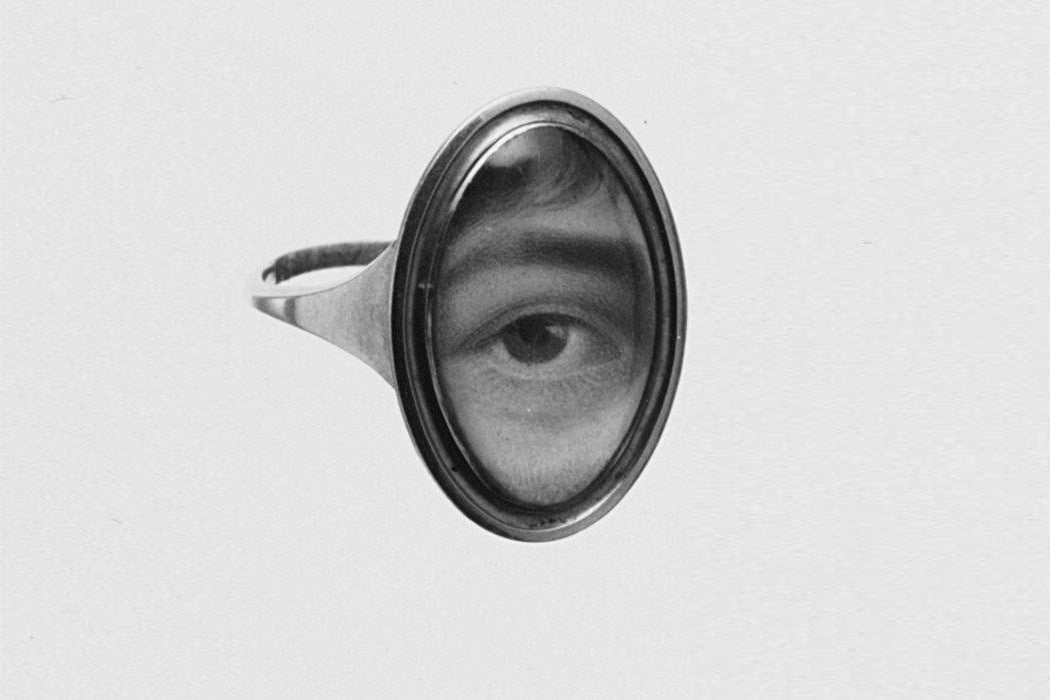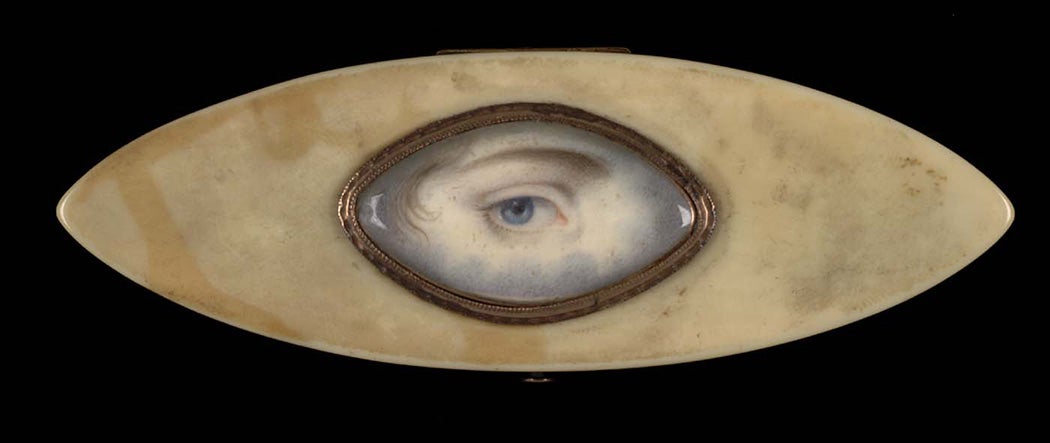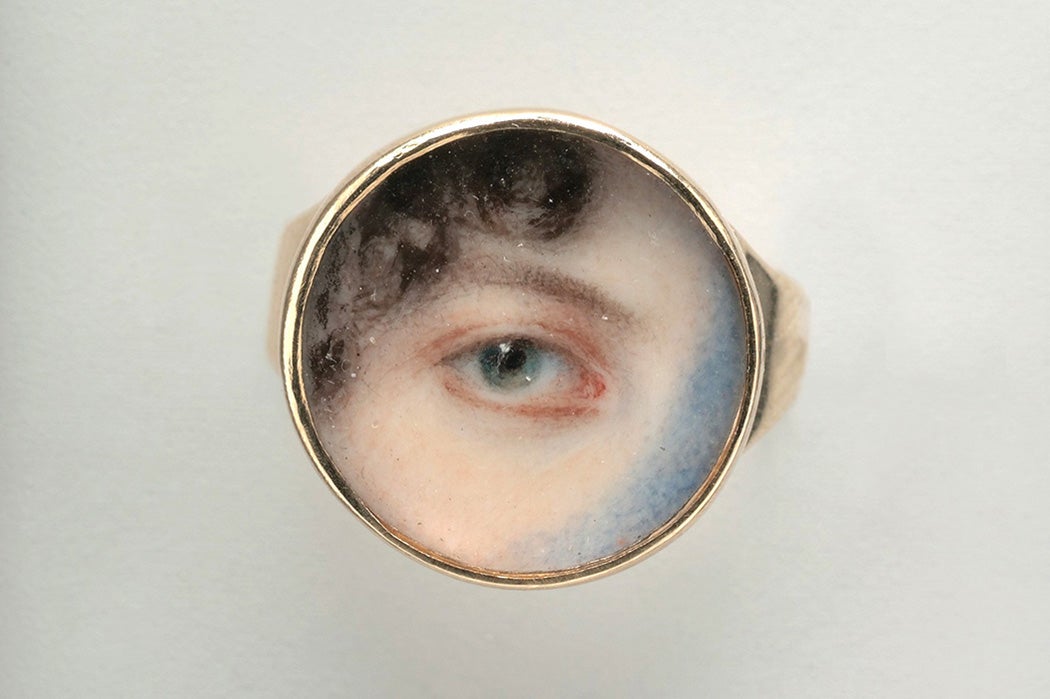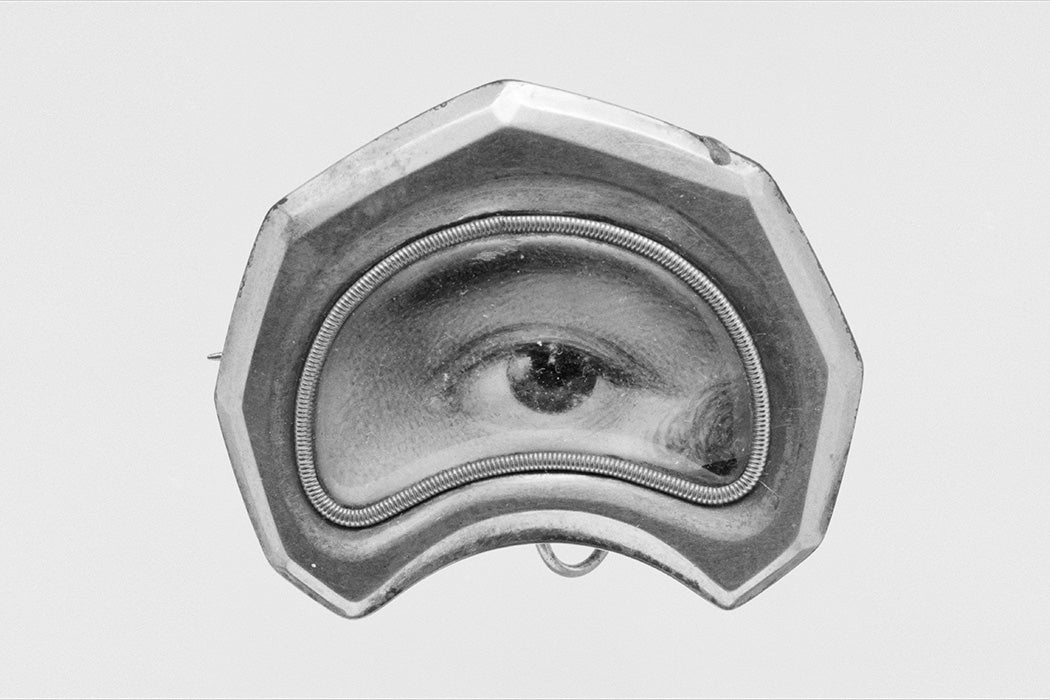No século XVII os amantes trocavam retratos dos seus olhos.
The miniature paintings celebrated and commemorated love at a time when public expressions of affection were uncouth.
In 1784 Maria Fitzherbert was twice widowed and just coming out of mourning into London society when she met the Prince of Wales—the future George IV—who was then twenty-one to her twenty-seven. He was immediately enthralled. Never mind that she was both a Catholic and a commoner, two big strikes against her ever being accepted by his father, King George III. The prince was defiantly infatuated and ardent in his pursuit of marriage, even threatening suicide if she would not have him. Fitzherbert, for her part, thought it was best to flee the country when her relentless admirer proposed.
As art historian Hanneke Grootenboer relates in The Art Bulletin, Fitzherbert soon received a letter from the prince, which included a curious token: a small painting of a single eye. He wrote, “if you have not totally forgotten the whole countenance. I think the likeness will strike you.” Grootenboer explains that it “was a very small miniature painting of the prince’s right eye created by his friend the celebrated miniaturist Richard Cosway.” Shortly after, Fitzherbert returned to England and secretly married the prince, later giving him a matching painting of her own gazing eye.

Their marriage was not considered valid due to the lack of royal consent, but the lore around the eye paintings endured, inspiring a fashion for such tokens. While miniature portraits were already popular in eighteenth-century England, they were often private objects viewed solely by the wearer. Yet an eye portrait could be worn boldly on a bracelet, ring, stickpin, pendant, or brooch, with the identity of the subject a mystery.
Although commonly called “lover’s eyes” for this fad in courtship, the eye paintings later became part of Victorian mourning jewelry. Sometimes the eye representing the departed would be adorned with pearl or diamond teardrops, as if the deceased were weeping for their own death. Because the identities of the subjects are now frequently unknown, it’s often hard to identify which paintings were for love and which were for mourning.
Because the fashion for the eye miniatures was relatively brief—roughly from 1785 to the mid-nineteenth century—examples are now rare.
One of the largest collections is now held by David and Nan Skier, who have amassed over 100 examples of the portraits, selections of which were exhibited in 2012 at the Birmingham Museum of Art in Alabama.






